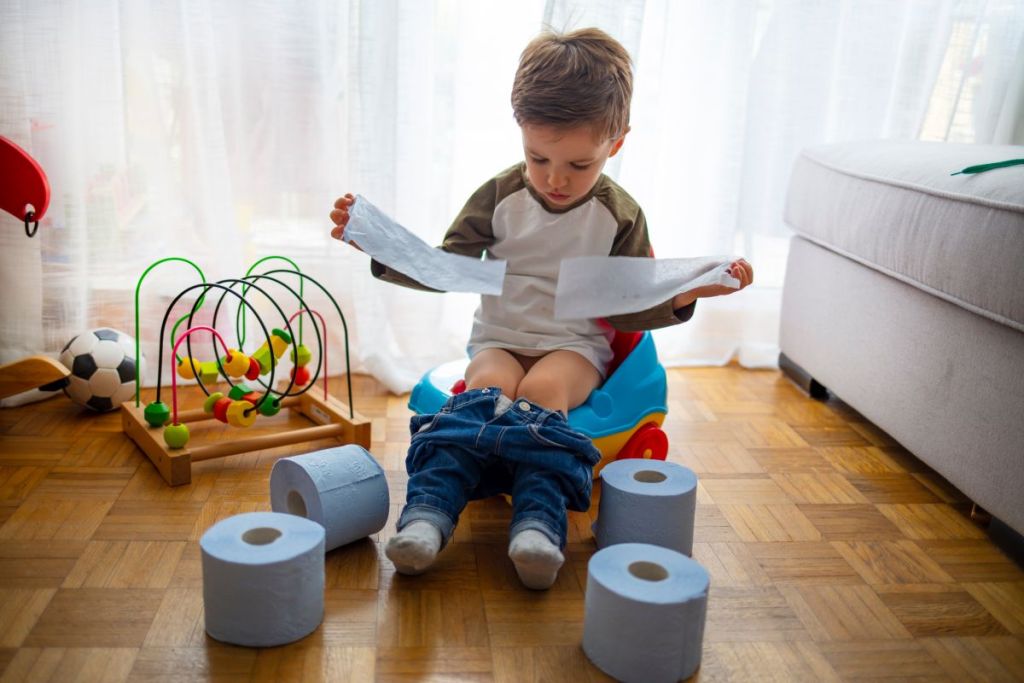When it comes to diapers and toddlers, most kids want to skirt the task of changing tables and wet pants just as quickly as most parents do as well. Once toddlers start moving, it becomes difficult to get them to cooperate on the best of days. The task of slowing down a toddler to address a wet diaper can often compound things, which can segue into a battle of wills. If you are a toddler parent looking to jump ship from diapers into the wide world of potty training, you may be wondering where to land and what methods to use along the way. If you’ve seen any news articles or read any parenting magazines, chances are you have at least heard of the “3-day potty training method” and are possibly wondering if it could work for your family. But, what is the 3-day potty training method?

The method of 3-day potty training
When it comes to new concepts and learning new things, it’s best to start at the beginning. The idea of the 3-day method comes from author and self-proclaimed “Potty Training Queen,” Lora Jensen. In her book, “3-Day Potty Training Start Friday, Done Sunday!,” she describes the events to take place during the 3-day parenting stint. Jensen goes on to describe the marathon as real work, not “cooking, cleaning or visiting with friends—or Keeping up with the Kardashians. You will seriously be spending all waking hours with your child for three days,” she says.
During the 3-day, all-day event, parents will take their child(ren) to the restroom every 15 minutes, during the day, and while awake. During this time, lest you thought we were joking, parents will quite literally, escort their toddler to the restroom every 15 minutes. There will be no time to do other things, much like the author described. And while this may seem extreme to some parents, the effort and work pay off to those who are determined and experience cooperation from their child.
How to plan the weekend
Jensen encourages parents to use her technique over the course of a weekend, allowing for the smoothest possible experience and transition. That strategy will only pan out if parents or guardians work a traditional schedule of Monday through Friday. If that timeframe doesn’t work for your family, simply try to nail down 3 days in a row that you and your support system can use instead for training. It’s important that 3 days be followed for the methodology to take root and set in motion the actual process of training your little one to use the toilet versus relieving themselves via diaper. A few added tips to use are:

- Rely on your partner or support team to give you an assist. Plan a meal schedule, prep ahead of time, utilize Crockpot or Instant Pot cooking, order takeout, or ask for help to get the job done. By having a meal plan in place, parents will have less to focus on while relieving tension and stress build-up in the home.
- Stay on top of home-based chores prior to the weekend or designated training days. You will want as few distractions as possible while potty training, so having cleared chore lists prior to the event will also relieve stress and pressure to do other tasks besides potty training.
- Grab a package of super soft and comfortable t-shirts for your little one. The idea of this process is to remove the diaper from the equation, and not allow them the choice of having any tools or clothing to catch the dribbles. Parents want to know right away when their child has an accident during the training. This lets them know if environmental or behavioral factors are at play.
- In addition to the t-shirts, parents will want to stock their fridge or pantry with plenty of fluids. Potty training toddlers goes much more smoothly if parents can train as often as possible during the 3-day event. Fluid inputs are increased and encouraged to help reinforce the potty-training method.
Will the 3-day method work for your child?
The idea is to encourage, reinforce, and visualize the process with your child. By shortening the time period of training, you’re not only saving yourself the hassle – and let’s not forget expense – of diapering a toddler, but it also relieves the mounting pressures of society and parenting by getting the task of potty-training out of the way quickly and efficiently. It’s important to note that while this exercise is highly sought after and quickly deals with the issues of drawn-out potty training, that does not mean it’s ideal for every family.
Family dynamics, special needs, medical conditions, or other ailments can prevent this method from working for every family, so it’s highly encouraged for you to discuss this subject with your child’s pediatrician. They are the most in tune with your child’s needs, other than yourselves, and can offer sound advice for your child’s individual needs. Additionally, if you have any questions or might be more interested in what all goes into the 3-day potty training method, you can pick up Lora Jensen’s book.



